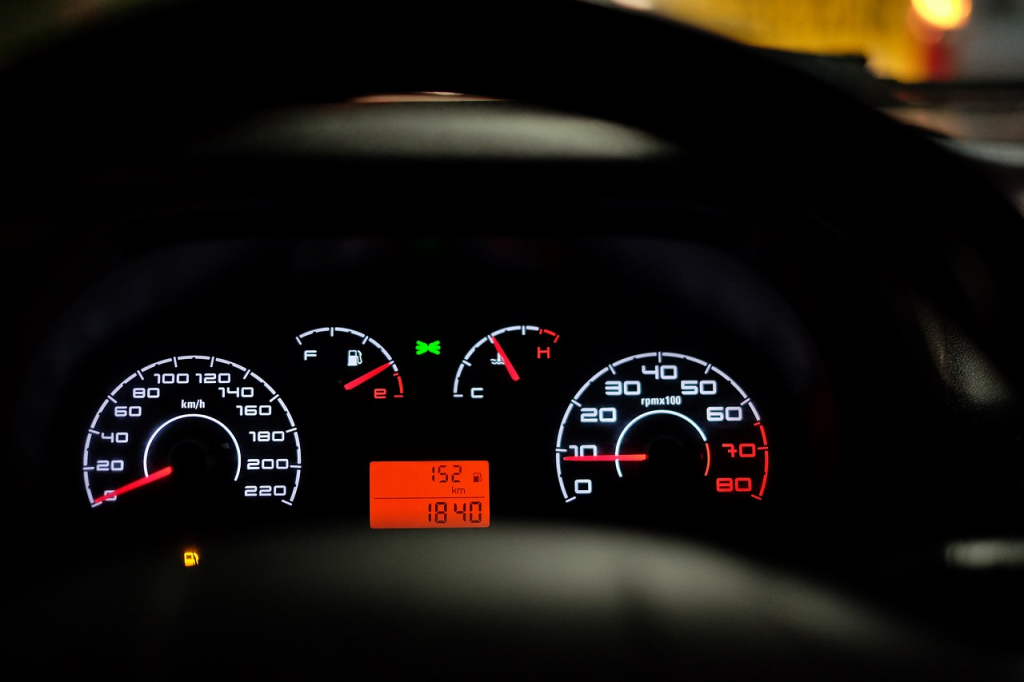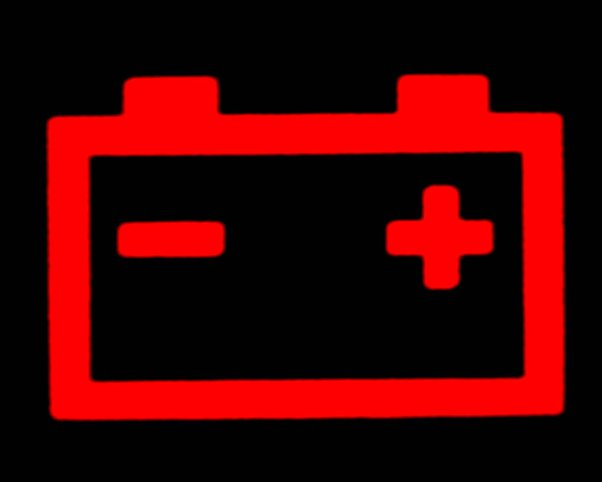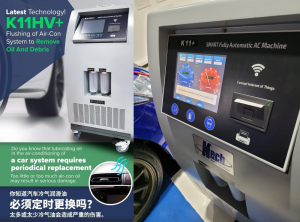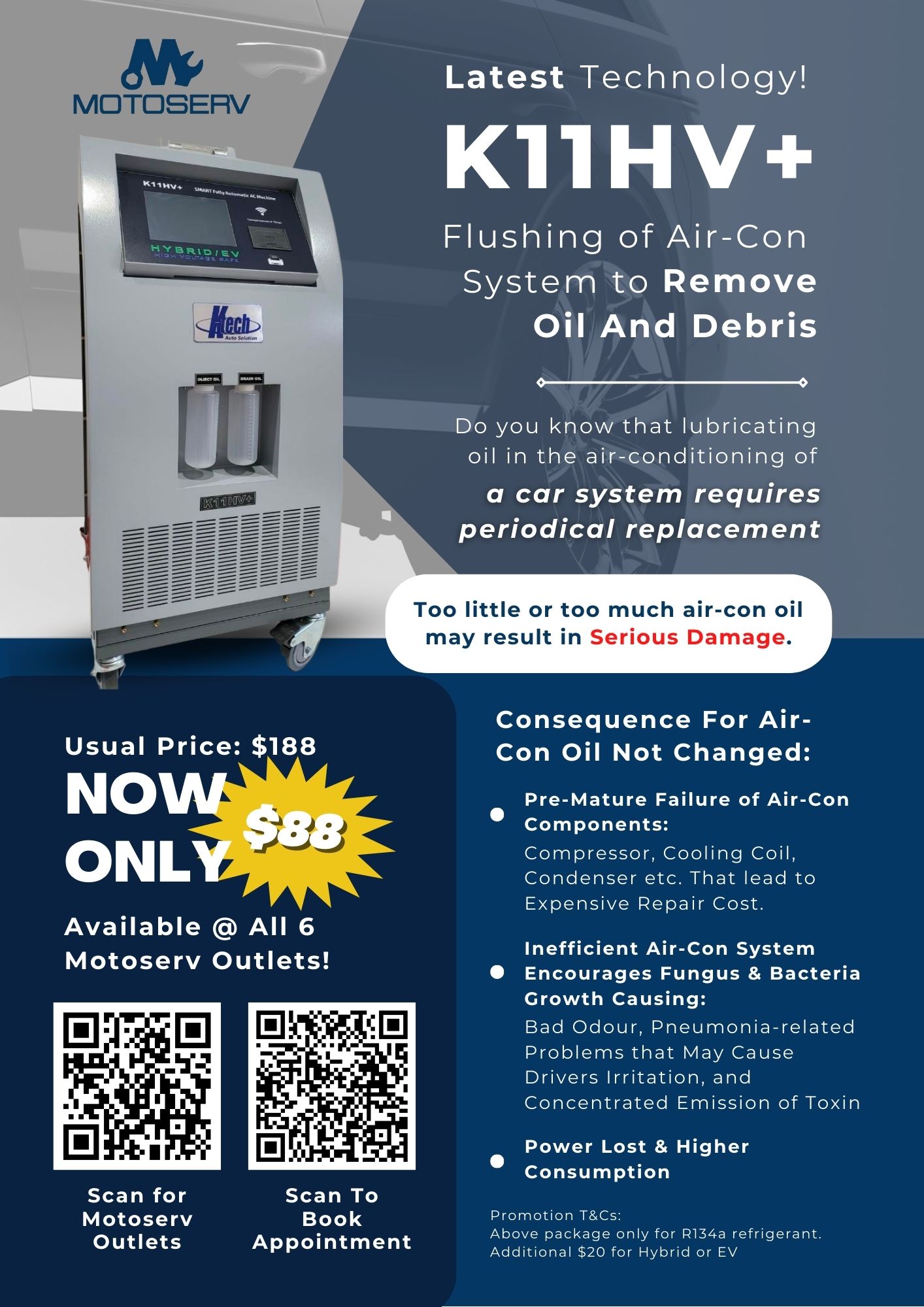Car service is important for fixing those unusual problems that often occur due to long term usage.
Cars are not immune towards breakdowns or malfunctions especially when it comes to a bunch of warning lights on the dashboard all of a sudden.
Therefore modern cars nowadays are equipped with warning lights as a vehicle communication system to alert us the drivers about the potential issues toward the vehicle.
Therefore, it is important for us to know about these warning lights on the dashboard so we can identify what the problem is.
Here are some of the car warning lights that we should be aware on:
Check Engine
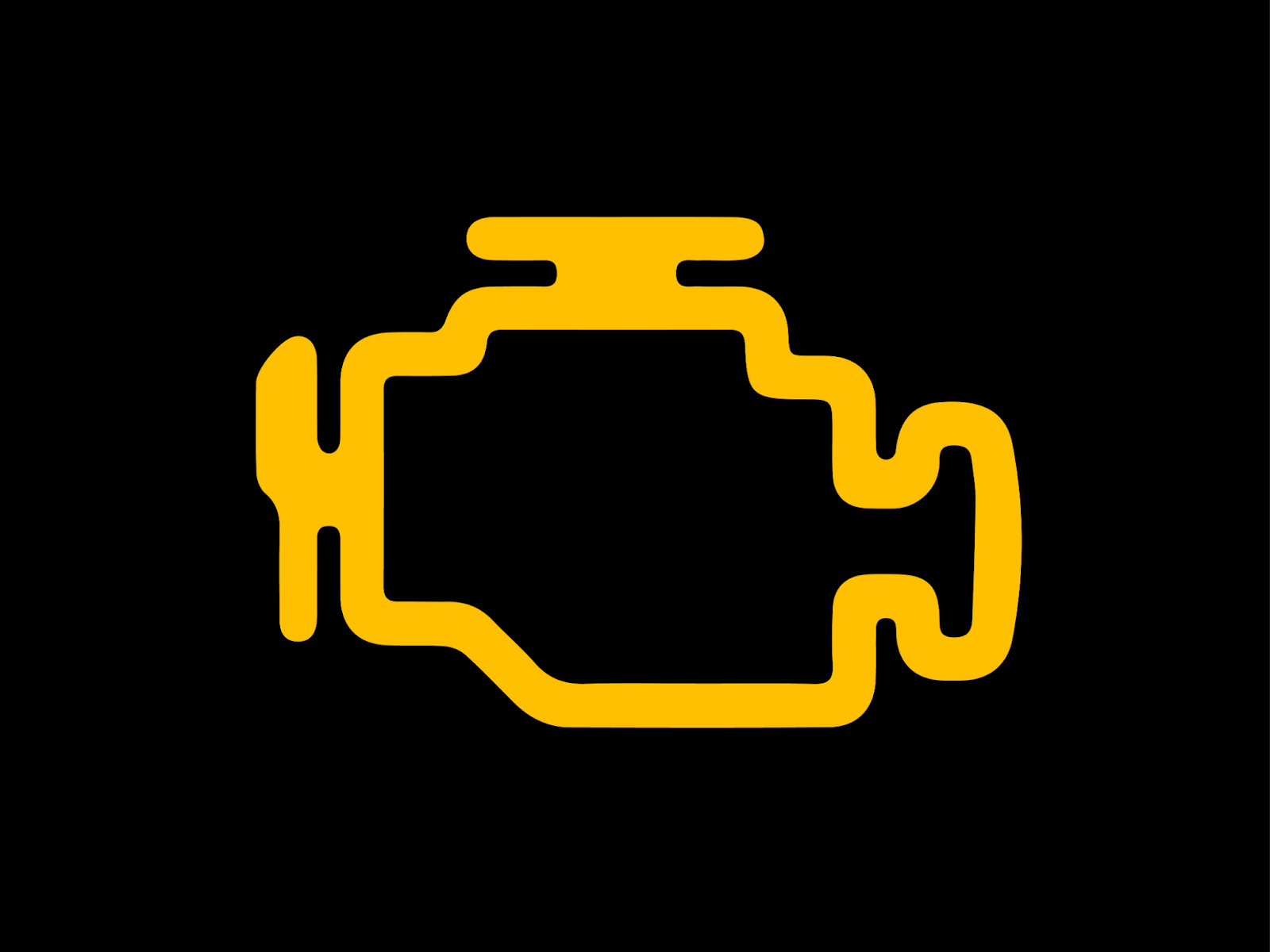
Check Engine Light or in short terms CEL, is one of the most important warnings to be aware of and it is a common warning light found in vehicles whereby it indicates that there’s a problem that is related with the engine of the vehicle, the emission system or the fuel system of the car as well.
The cause of check engine light to appear can vary depending from minor issue to becoming a severe problem.
Here are some of the potential triggers:
Faulty Oxygen Sensor: The oxygen sensor monitors the amount of unburn oxygen in the exhaust gasses. A malfunctioned sensor can impact the cars overall fuel efficiency and triggering the check engine light
Spark Plug or Ignition Coil Problem: Issues with the spark plugs or the ignition coils in the engine can lead it to the engine don’t get sufficient fuel and the spark needed for the engine to run in which affect the overall engine performance
Mass Airflow Sensor Failure: The mass airflow sensor monitors the amount of airflow coming through the engine and when sensor malfunction, this lead the car is running either rich or lean air-fuel mixture whereby affecting the performance of the engine
Here are some of the potential fixes:
Read the Vehicle Manual: The vehicle manual is the easiest way on how to identify the check engine light issue since the majority of the car manufacturers have prepared a guide on how to solve warning lights and guide you step-by-step on the troubleshooting.
Repair Faulty Components: Depending on the diagnosis, some components do need to be changed such as the airflow sensor, the spark plugs and the coil plug.
Clearing Error Codes: In some cases, the check engine light appears due to a glitch or sensor not working properly. By clearing the error code and reset the system it might solve the issue temporarily, but if the warning lights still occur you can visit here where they provide car repair and service
What happens if you ignore the Check Engine Light?:
Internal Engine Damage: Ignoring the CEL can potentially damage the internal components of the engine such as the pistons, bearings etc which result in severe and costly damage to the engine overtime.
Reduce Fuel Efficiency: Issues that can trigger CEL can negatively impact the car overall fuel efficiency which lead to increase the fuel consumption of the car.
Decrease in Engine Performance: Ignoring the CEL can lead to decreasing in engine performance, some vehicles model will employ a protective measure which is called limp mode when the CEL light appear, this allow you to only use certain engine RPM and gear ratio on the car, this to make sure that it doesn’t cause more damage on the engine.
Oil Pressure Light
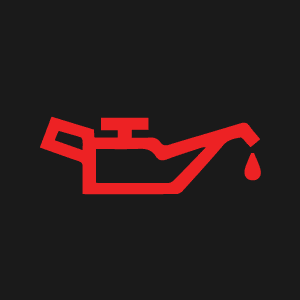
Oil pressure warning light is an indicator that alerts the driver that the car has issues with the engine oil pressure. The cause of oil pressure warning lights appearing in the dashboard can vary from different reasons.
Here are some of the potential triggers:
Low Oil Level: Insufficient oil in the engine is one of the reasons why the Oil pressure warning light appears. When the engine doesn’t get the amount of oil needed for it to run properly can result in the engine losing oil pressure hence triggering the warning light. This could be from the engine leaking oil or burning oil.
Oil Pump Malfunction: The vehicle oil pump is responsible for circulating the oil throughout the engine and if the oil pump fails, it can lead to a sudden drop in oil pressure.
Here are some of the potential fixes:
Check Engine Oil Level: Check the engine oil level using the dipstick. If the dipstick shows the oil is low then try to top it up to the recommended level using the motor oil that is specified to your car engine which is shown in your vehicle manual.
Check for Oil Leaks: Check for any visible sign of oil leaks around the engine bay of your vehicle, including underneath the vehicle. If there’s oil leaks, then try to address the leaks promptly to prevent further loss of oil. Visit your nearest car service center for repair.
What happens if you ignore the Oil Pressure Light?:
Engine Damage: Insufficient oil pressure can result in damage to the internal components of the engine since oil serves as a lubrication for the engine therefore the lack of oil pressure in the engine will lead to increased fractions between the components and permanents damage such as pistons, bearings and crankshaft.
Engine Failure: Continuing to drive with a low oil pressure will increase the chance of risk of engine failure which can lead to expensive repair.
ABS & Traction Control Warning Lights
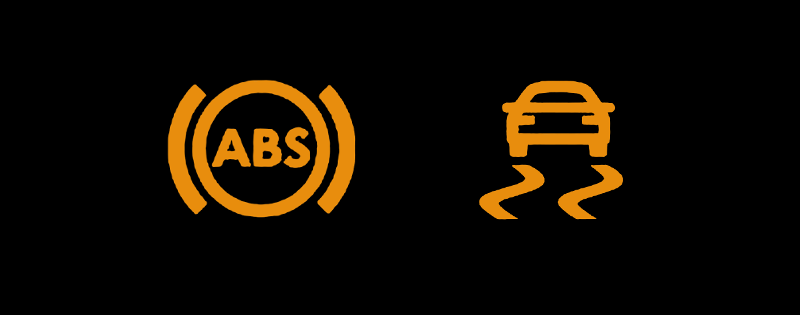
ABS or (Anti-Lock Braking System) and traction control warning lights are essential safety indicators, they are designed to alert the driver that there are potential issues with the crucial system within the vehicle. The cause of ABS and Traction Control warning lights lighting on the dashboard can be due to several reasons.
Here are some of the potential triggers:
Faulty ABS Sensor: The ABS warning light might be due to a faulty ABS sensor in which the ABS are responsible for monitoring the wheel speed. A faulty ABS sensor could disrupt the ABS system from working properly.
Faulty Wheel Speed Sensor: Traction control warning light may appear due to faulty wheel speed sensor, when the wheel speed sensor detects there’s a significant wheel speed it will cause the warning to come up to the dashboard.
ABS Module Failure: ABS Module Failure such as electrical faults or internal damage on the module could trigger the ABS warning lights. This can affect the vehicle system on controlling the braking functions properly.
Here are some of the potential fixes:
Check ABS & Traction Control Systems : If the warning still appears in the dashboard then try to make an appointment with your nearest service center to get inspected by a qualified mechanic. They have the diagnostic tool to identify the issue and recommend the appropriate repairs.
Replace Faulty ABS Sensor: Replacing the faulty sensor should be able to solve the ABS Sensor warning light from appearing in the dashboard and making sure the vehicle ABS system is working properly.
Reset Warning Lights: Try resetting the ABS and Traction Control the warning lights by using a diagnostic scanner or disconnecting the vehicle battery for a few minutes.
What happens if you ignore the ABS & Traction Control warning lights?
Braking Performance Issue: Ignoring the ABS & Traction control warning light will affect your vehicle braking performance and potentially need longer distance in order for the vehicle to stop.
Risk of Skidding: A malfunctioning ABS & Traction control systems will affect your vehicle to not effectively prevent wheel lock-up or loss of traction which increase the risk of skidding and losing control of the vehicle during braking or acceleration.
Reduce Vehicle Stability: Ignoring ABS and Traction control system can affect the vehicle stability and control especially during emergency maneuvers or driving conditions.
Engine Temperature Warning Light
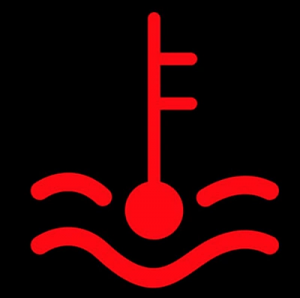
Engine Temperature Warning Lights is a critical indicator that alerts the driver that the car has potential overheating issues within the vehicle engine. The cause of engine temperature warning lights appearing in the dashboard can vary from different reasons.
Here are some of the potential triggers:
Radiator Issues: Potential leaks, clogs or damage to the radiator can affect the cooling system of the engine in which contribute to the vehicle engine to get overheating issues hence why the engine temperature warning light would appear in the dashboard.
Cooling Fan Failure: Malfunctioning of the vehicle cooling fans could cause inadequate airflow through the radiator making which result in the engine to overheat. As a result, triggering the engine temperature warning light to appear.
Coolant System Problem: faulty or malfunction cooling components such as thermostat or faulty water pump and low coolant level could cause the engine to overheat and triggering the engine temperature warning light to appear.
Here are some of the potential fixes:
Check Coolant Levels: Check the vehicle coolant reservoir and add coolant if it’s low and make sure to use the correct type of coolant that is specified to your vehicle.
Check for Leaks: Check the vehicle if there’s any visible coolant leaks in the engine bay and underneath the vehicle. Address the leaks promptly to prevent more coolant loss.
Check Cooling System Components: Inspect the radiator, hoses, thermostat, and cooling fan for any signs of damage or malfunction. Repair any faulty components as needed.
What happens if you ignore the engine temperature warning light?
Engine Damage: Ignoring the warning and continuing to drive with a potential overheating engine can cause internal engine damage to components such as valves, pistons, the cylinder head and the engine block itself.
Engine Failure: Prolonged overheating can cause catastrophic engine failure, rendering the vehicle unable to operate and need a new engine replacement, which can cost a lot of money.
Battery Warning Light
Battery warning light serves as a vital indicator in your vehicle dashboard, it signals there are potential issues with the charging system or possibly your battery. The reason behind the battery warning light lights up on the dashboard can be due to several reasons.
Here are some of the potential triggers:
Low Battery Voltage: this the most common reason for the Battery Warning Light to illuminate, this can occur due to the vehicle battery failing, loose or corroded battery terminals.
Faulty Alternator: A faulty alternator can lead to the car battery not getting sufficient charge resulting in low battery voltage which leads to the reason the battery warning lights appear on the dashboard. Alternator is responsible for charging the battery and providing power to the vehicle electrical components.
Electrical System Issues: Electrical system issue in the vehicle such as faulty voltage regulator or wiring problems can lead to the Battery Warning Lights to appear on the dashboard
Here are some of the potential fixes:
Check Battery Connections: Check the battery terminals and see if there’s any signs of corrosion or looseness. Make sure the terminals are clean and securely tightened to the battery posts.
Test Battery Voltage: Try checking the battery voltage by using a multimeter on the battery terminals both with the engine off or on. A healthy battery should be around 12.6 volts when the engine is off and 13.5 to 14.5 volts when the engine is running.
Inspect Alternator: if the battery voltage is low when the engine is running, the alternator might be the problem. Have the alternator check with a car service repair shop to be tested if it is faulty. Replace the alternator with a new one if necessary.
What happens if you ignore the battery warning light?
Vehicle broke down: Ignoring the Battery Warning Light can lead to the car won’t start, leaving you stranded and requiring assistance to jump-start or tow the vehicle.
Damage to Electrical Components: Ignoring could cause damage to the sensitive electrical components in the vehicle such as the power windows, starter motor and electronic control modules.
Conclusion
Understanding and promptly addressing car warning lights is crucial for maintaining the overall vehicle safety, reliability and performance of the vehicle.
It is important for us to understand the type of car warning lights and learn how to promptly address the issue. This is crucial to ensure the overall vehicle safety, reliability and performance of the vehicle.
If you still ensure the type of car warning lights they are or maybe you have difficulty troubleshooting the warning light on your own, come visit our car service workshop! Fill in the form here or contact us at tel:+6562643832

